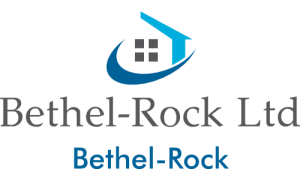Threat Identification And Its Importance In Risk Administration
For one, small companies are extra vulnerable than larger ones, so they must be extra vigilant about dangers. And for an additional, small companies have fewer resources to fall again on if something goes wrong. By understanding the risks concerned, you’ll have the ability to set up measures to guard your self and your small business from potential issues. What type of harm will it trigger to the project can or not it’s avoided or lined up?
Survey the office and look at what could moderately be expected to cause harm. Check the manufacturer’s or suppliers’ directions or knowledge sheets for any apparent hazards. An engineer by trade, Heather makes a speciality of translating business wants and facilitating options to complicated cyber and GRC use circumstances with expertise. Heather has a Bachelors in Computer Engineering, Masters in Engineering Management, and a Doctorate in Information Technology with a specialization in info assurance and cybersecurity. Wrike allows us to plan a project with enough detail that we actually scale back the danger … of the project not going accurately. It’s good practice to assign obligations at the very start of a project, mapping roles with responsibilities.

With today’s technology like SafetyCulture’s Training characteristic, organizations can create and deploy more tailored-fit programs based on the wants of their workers. We recommend OSHA’s great learning resources in understanding the way to assess consequence and probability in your risk assessments. In quantitative danger evaluation, if a project has a 25% likelihood https://www.globalcloudteam.com/ of delay as a end result of a single source, using a chance evaluation might help calculate the anticipated extension in completion time.
This may embody issues like how lengthy tasks took, the issues you faced, and even the tiny particulars you might not think matter. They arise from the potential of failing to adhere to laws, regulations, and trade requirements. For businesses in closely regulated sectors, these risks can lead to hefty fines, reputational harm, and legal troubles. Explore the basics of threat taxonomy and learn how to classify and manage risks for higher decision-making and compliance. Risk identification should be conducted by the risk owner along with their staff. By involving everyone within the course of, the group can pinpoint risk components quickly and with more depth.
Risk analysis helps decide the likelihood of a risk and the severity of its potential penalties. To consider a hazard’s threat, you need to think about how, the place, how a lot, and the way lengthy people are sometimes uncovered to a potential hazard. This refers to danger assessments carried out for big scale advanced hazard websites such because the nuclear, and oil and gasoline industry. This sort of assessment requires the use of a complicated threat evaluation method known as Quantitative Risk Assessment (QRA).
- A template to list and analyze dangers is a simple means to make certain you and your stakeholders are on the same page.
- VaR calculates the maximum loss over a selected time-frame at a given confidence level, allowing firms to maintain the stability of their financial standing.
- Team brainstorming sessions leverage collective insights to uncover a variety of risks.
- This additionally signifies that risks usually are not always negative they’ll optimistic which can play a component in reaching the objectives of a project.
Statement Finalization
Handling a danger of this nature is all about streamlining your operations and making certain consistency. These risks come up from the choices your organization makes about its business path. They can embody getting into a model new market, introducing a new product, or altering business models. Poor strategic decisions can lead to vital setbacks, from missed opportunities to financial losses. One learns technical maturity which is required in the competitive market, to evaluate risks more effectively. This course of guides the agency or the teams through the operational nature of capabilities which assist respect the gravity of dangers and the impacts it might have on the customers.
What Are The Five Identified Risks?
Historical Data Review is immensely useful for industries like finance or healthcare, where previous trends can considerably forecast future risks. Organizations usually mix a number of strategies to ensure a thorough risk identification course of, guaranteeing no potential concern is left unaddressed. In order to effectively manage risks, it is crucial to first understand where these risks come from. A threat identification guidelines is a device used to help project managers and team members systematically determine potential dangers that could influence a project. The checklist outlines a sequence of questions or prompts to information the risk identification course of, making certain that every one related elements are considered. Risk identification in project management is figuring out potential dangers that would negatively impression the success of a project.

Some widespread pure disasters embody fires, storms, floods, and earthquakes, every with the potential to trigger property injury risk identification definition, disrupt provide chains, and jeopardize the security of workers and customers. In at present’s technologically-driven world, organizations face a spread of potential dangers that would disrupt their operations and compromise delicate knowledge. Cyber risks, such as power outages, pc failures, and vulnerabilities in cloud storage, pose important threats to both the security and continuity of businesses. The mannequin turns into more and more “risk governance lite” for smaller businesses however project threat identification and administration should all the time be a precedence.

Consequently, strategies can be refined to reduce this likelihood and guarantee project timelines are met. For extra helpful templates and resources, see our comprehensive listing of project danger management templates. Each type of danger requires particular mitigation strategies because the potential impact of these dangers on a project can differ tremendously. Technical risks, for example, could lead to system failures or data loss, resulting in project delays or customer dissatisfaction.
Report on key metrics and get real-time visibility into work because it occurs with roll-up stories, dashboards, and automatic workflows constructed to maintain your team connected and knowledgeable. Businesses can use threat identification to plan for doubtlessly detrimental occurrences and scale back their impact earlier than they occur. Rather, the primary one is a pattern danger identification template, and the second is a risk register holding the same info. Market dangers are tricky because they’re pushed by the unpredictable nature of client developments, competitor innovations, and even political or economic upheavals. Risk management here is much less about avoiding change and extra about adapting to it quickly and successfully. They can embrace the growing impacts of local weather change, shifting climate patterns, and even regulatory modifications geared toward defending the setting.
This may be accomplished by contemplating components such as cost estimates, price uncertainty, and the potential impacts on revenue, bills, and investments. A danger register will help you establish multiple project dangers, from data breaches to provide chain disruptions and catastrophic occasions. In this text, we’ll talk about danger identification and its important, key methods and finest practices for effectively figuring out organizational risks, and more.
One way to assess the probability of risks occurring is through the use of actuarial tables or historic knowledge. These tables provide insights into the likelihood of specific dangers happening based mostly on previous occurrences. PMI’s “Pulse of the Profession 2020” report, which surveyed over three,000 project professionals, senior executives, and administrators LSTM Models, sheds extra gentle on danger management. It reveals that 25% of projects falter because risks are not identified or mitigated effectively, resulting in unexpected points that might have been managed. Risk identification is the method of figuring out potential dangers to your small business. This can embody something from a pure disaster that might injury your property to a disgruntled worker who may sabotage your systems.
